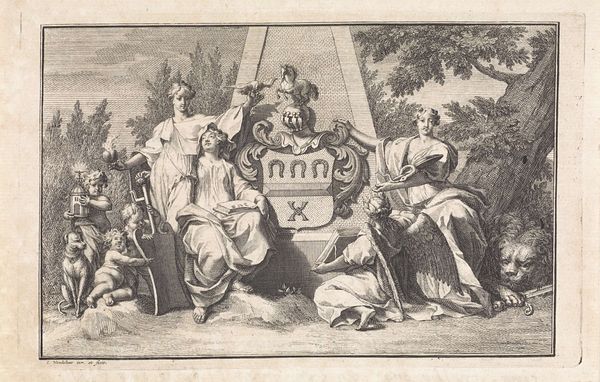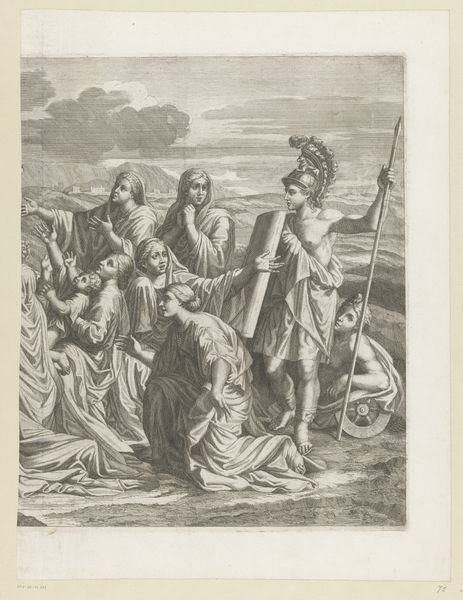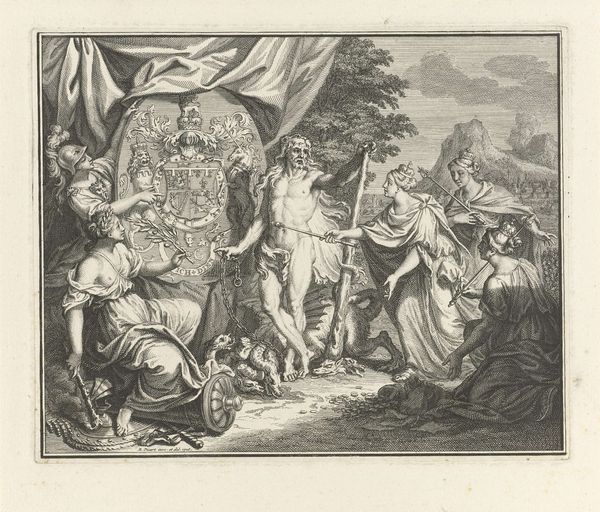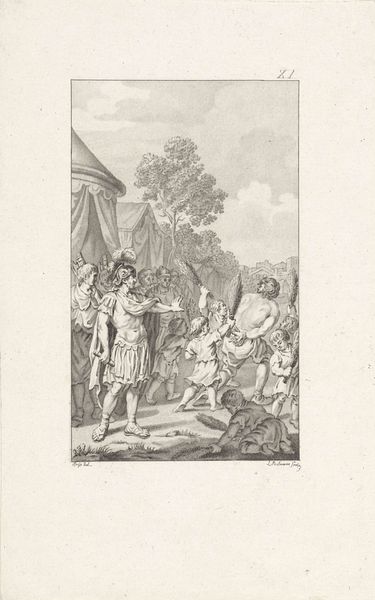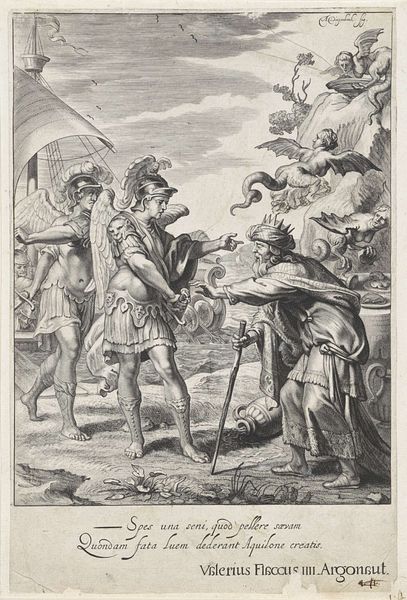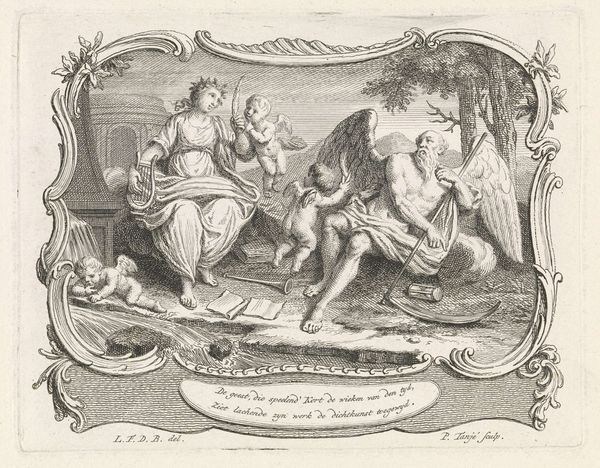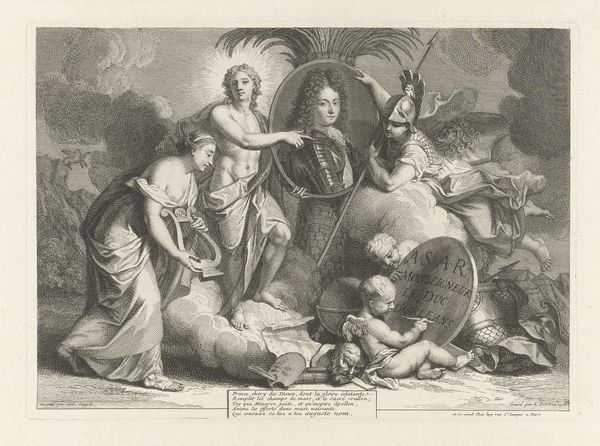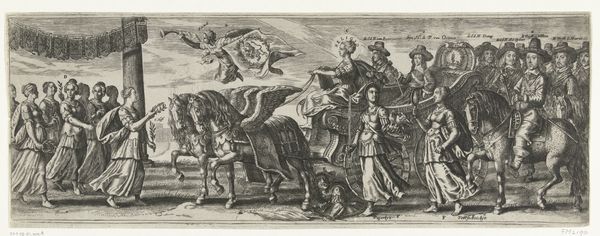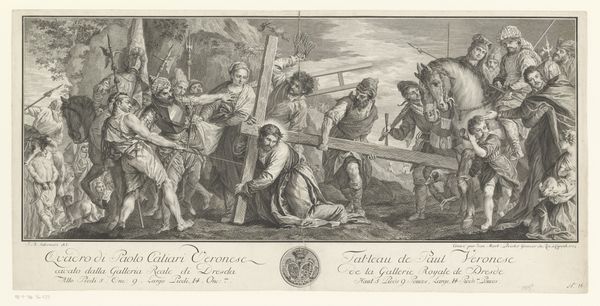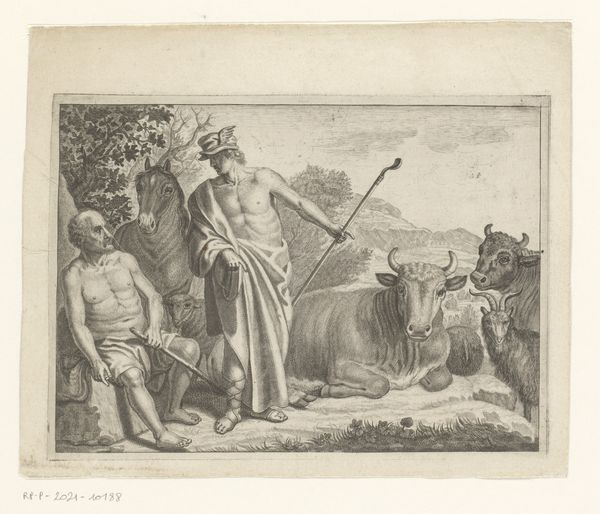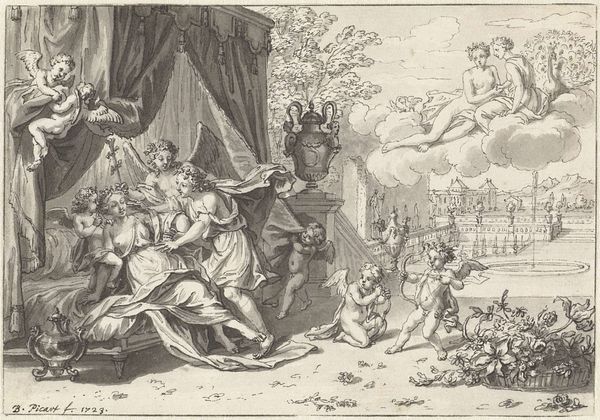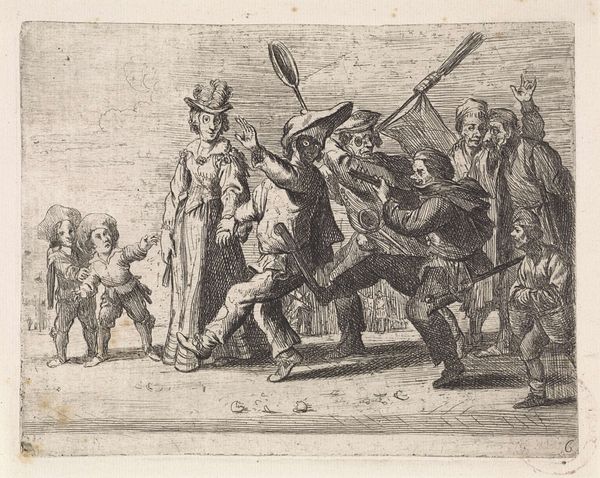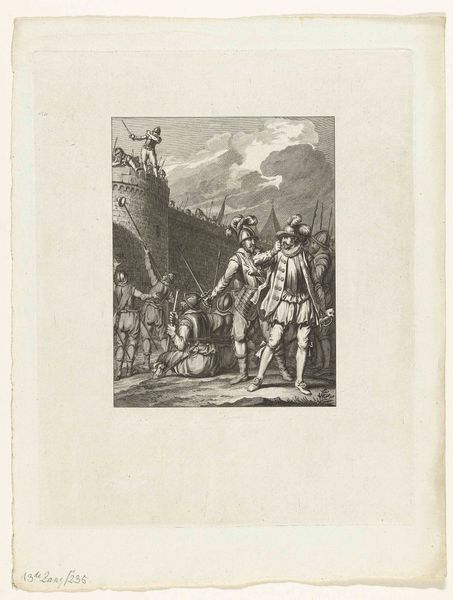
engraving
#
portrait
#
allegory
#
baroque
#
old engraving style
#
figuration
#
personal sketchbook
#
geometric
#
line
#
history-painting
#
engraving
Dimensions: height 100 mm, width 150 mm
Copyright: Rijks Museum: Open Domain
Curator: This engraving, "Allegorische voorstelling met het wapen van George I" by Jan Wandelaar, dates from 1714 to 1759. It's part of the Rijksmuseum's collection. It strikes me as quite theatrical, even bombastic, with that central crest surrounded by such dramatic figures. Editor: Bombastic is a good word for it. Look at the level of detail Wandelaar achieves with what appears to be a very precise technique. Notice how the density of line work dictates tone and texture, drawing our eye across different surfaces and fabrics. It really shows the labor and skill embedded in its production as a piece intended for display and likely dissemination. Curator: Absolutely, the production and intended use of such prints is key. They served a clear propagandistic function. Allegorical representations of power were crucial in shaping public perception of new regimes, like that of George I, after the Act of Settlement. Editor: Note the contrasting figures included in the scene. Three reclining classical maidens, one armored warrior brandishing a spear, some cherubs—and is that… are those dead lambs at the foot of it all? Curator: The victims symbolize sacrifice and divine favour. Consider the political messaging: George I is aligned with military might and classical virtues, blessed with peace and prosperity and well worth fighting for, even at great cost. What is also important to note is how the artwork serves to create and preserve authority through symbolism and visual cues tied to established conventions. Editor: I'm curious about Wandelaar himself and the workshops involved in such creations. These weren't solitary artists working in isolation, were they? This print likely emerged from a network of engravers, printers, and distributors operating under specific economic and social conditions, manufacturing the spectacle of power in repeatable and easily distributed images. Curator: Precisely. The accessibility and repeatability were vital to disseminate these ideals on a broader scale, embedding these figures into the cultural consciousness. The image’s political context and production process played major roles in constructing meaning, influencing not only contemporary audiences, but our view of the past, and indeed the art we see displayed today. Editor: Reflecting on this, the print is not merely an image but evidence of a sophisticated, coordinated industry intent on producing and propagating very particular ideological concepts to society at large. The materiality is inextricable from its politics.
Comments
No comments
Be the first to comment and join the conversation on the ultimate creative platform.
